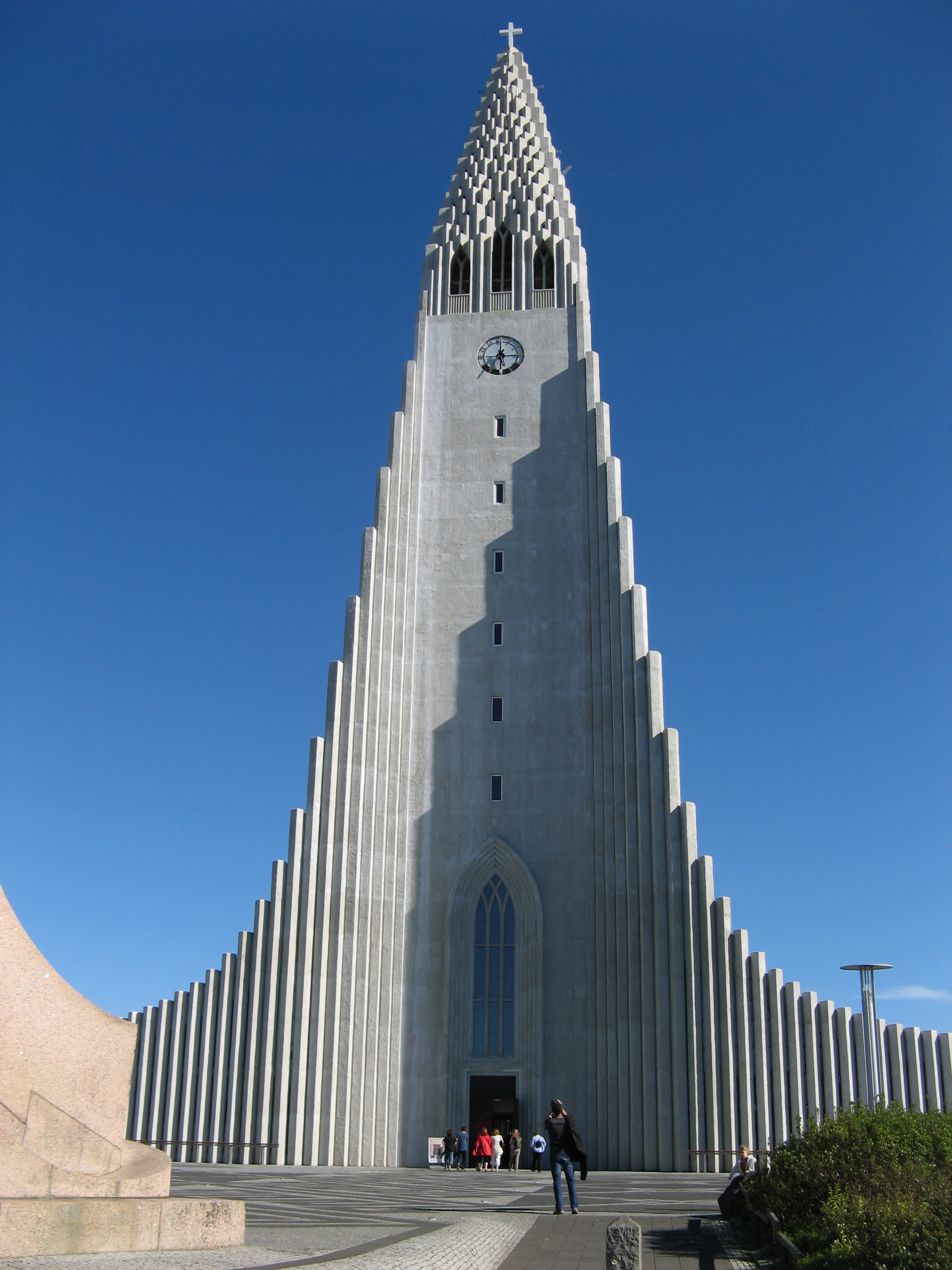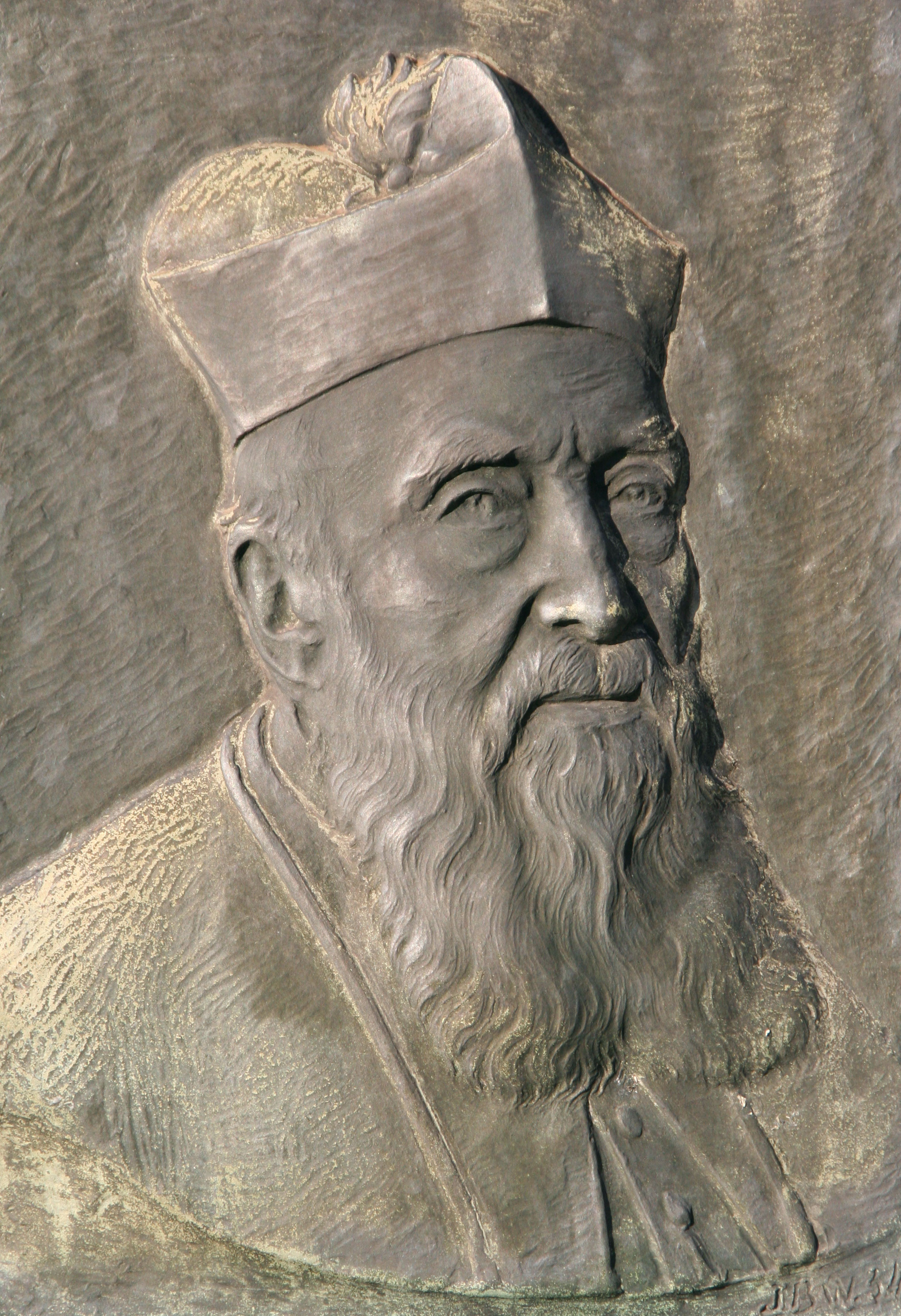|
Bernard Bernard
Bernard Bernard (21 July 1821 in Mogues, France – 28 October 1895) was a French Catholic priest and missionary in Norway, Iceland and Scotland. He was the first Prefect Apostolic of Norway and Lapland from 1869 to 1887. Life Bernard was educated as a priest in Rome and received his consecration in Reims by Cardinal Thomas-Marie-Joseph Gousset (1792–1866). First a parish priest in the French Ardennes for a couple of years, he arrived in Norway in 1856, where he was put into service in the Catholic North Pole Mission (''Praefectura Apostolica Poli Arctici''). Later in 1856 he was sent to Iceland, which was a part of the North Pole Mission, where he arrived in 1857. Together with Jean-Baptiste Baudoin (1831–1875), Bernard was the first Catholic priest to serve in Iceland after the Reformation, where they built a small chapel at the Landakot farmstead near Reykjavík. They met with a difficult reception and in 1862 Bernard left the country, while Baudoin persevered until 1875 ... [...More Info...] [...Related Items...] OR: [Wikipedia] [Google] [Baidu] |
Mogues
Mogues () is a commune in the Ardennes department in northern France. Population Notable people * Lambert Closse, Sergeant Major of the garrison of Ville-Marie, Canada, was born in Mogues in 1618. See also *Communes of the Ardennes department The following is a list of the 449 communes of the Ardennes department of France. The communes cooperate in the following intercommunalities (as of 2020):Communes of Ardennes (department) Ardennes communes articles needing translation from French Wikipedia ... [...More Info...] [...Related Items...] OR: [Wikipedia] [Google] [Baidu] |
Ardennes
The Ardennes (french: Ardenne ; nl, Ardennen ; german: Ardennen; wa, Årdene ; lb, Ardennen ), also known as the Ardennes Forest or Forest of Ardennes, is a region of extensive forests, rough terrain, rolling hills and ridges primarily in Belgium and Luxembourg, extending into Germany and France. Geologically, the range is a western extension of the Eifel; both were raised during the Givetian age of the Devonian (382.7 to 387.7 million years ago), as were several other named ranges of the same greater range. The Ardennes proper stretches well into Germany and France (lending its name to the Ardennes department and the former Champagne-Ardenne region) and geologically into the Eifel (the eastern extension of the Ardennes Forest into Bitburg-Prüm, Germany); most of it is in the southeast of Wallonia, the southern and more rural part of Belgium (away from the coastal plain but encompassing more than half of the country's total area). The eastern part of the Ardennes forms the ... [...More Info...] [...Related Items...] OR: [Wikipedia] [Google] [Baidu] |
Religion In Iceland
Religion in Iceland has been predominantly Christian since the adoption of Christianity as the state religion by the Althing under the influence of Olaf Tryggvason, the king of Norway, in 999/1000 CE. Before that, between the 9th and 10th century, the prevailing religion among the early Icelanders (mostly Norwegian settlers fleeing Harald Fairhair's monarchical centralisation in 872–930) was the northern Germanic religion, which persisted for centuries even after the official Christianisation of the state. Starting in the 1530s, Iceland, originally Catholic and under the Danish crown, formally switched to Lutheranism with the Icelandic Reformation, which culminated in 1550. The Lutheran Church of Iceland has remained since then the country's state church. Freedom of religion has been granted to the Icelanders since 1874. The Church of Iceland is supported by the government, but all registered religions receive support from a church tax (''sóknargjald'') paid by taxpayers o ... [...More Info...] [...Related Items...] OR: [Wikipedia] [Google] [Baidu] |
Elusa (titular See)
The ancient city of Halasa or Chellous ( gr, Χελλοὺς), Elusa () in the Byzantine period, was a city in the Negev near present-day Kibbutz Mash'abei Sadeh that was once part of the Nabataean Incense Route. It lay on the route from Petra to Gaza.Carta's Official Guide to Israel, 1983. Today it is known as Haluza ( he, חלוצה), and during periods of Arab habitation it was known as al-Khalūṣ ( ar, الخلوص; Early Muslim period) and Al-Khalasa (; 20th century). In the 5th century it was surrounded by vineyards and was famous for its wines. Due to its historic importance, UNESCO declared Haluza a World Heritage Site along with Mamshit, Avdat and Shivta. Name in ancient sources The city is called 'Chellous' (Χελλοὺς) in the Greek text of Judith, i, 9 (seJdt 1:9in NABRE), a work probably dating to the 1st century BCE. It is also mentioned in the 2nd century CE by Ptolemy, Peutinger's Table, Stephanus Byzantius (fl. 6th century; as being formerly in t ... [...More Info...] [...Related Items...] OR: [Wikipedia] [Google] [Baidu] |
Titular Bishop
A titular bishop in various churches is a bishop who is not in charge of a diocese. By definition, a bishop is an "overseer" of a community of the faithful, so when a priest is ordained a bishop, the tradition of the Catholic, Eastern Orthodox and Oriental Orthodox churches is that he be ordained for a specific place. There are more bishops than there are functioning dioceses. Therefore, a priest appointed not to head a diocese as its diocesan bishop but to be an auxiliary bishop, a papal diplomat, or an official of the Roman Curia is appointed to a titular see. Catholic Church In the Catholic Church, a titular bishop is a bishop who is not in charge of a diocese. Examples of bishops belonging to this category are coadjutor bishops, auxiliary bishops, bishops emeriti, vicars apostolic, nuncios, superiors of departments in the Roman Curia, and cardinal bishops of suburbicarian dioceses (since they are not in charge of the suburbicarian dioceses). Most titular bishops ... [...More Info...] [...Related Items...] OR: [Wikipedia] [Google] [Baidu] |
Trondheim Prelature
Trondheim, Norway is the seat of the Roman Catholic Territorial Prelature of Trondheim, which before March 1979 was the Apostolic Vicariate of Central Norway. The prelature leadership is currently under bishop Erik Varden. The prelature includes parishes in Trondheim, Kristiansund, Levanger, Molde, and Ålesund. History The Reformation in Norway ended organized Roman Catholic practice in 1537. Between 1688 and 1834, northern Norway was included as part of the Roman Catholic Apostolic Vicariate of the Nordic Missions, before it passed to the Apostolic Vicariate of Sweden in 1834. In 1855, Norway north of the Arctic Circle became part of the new Apostolic Prefecture of the North Pole, while the rest of Norway (including Trondheim) remained in the Apostolic Vicariate of Sweden. On August 17, 1869, northern Norway rejoined with the rest of Norway in the new Apostolic Prefecture of Norway, which upgraded to Apostolic Vicariate of Norway in 1892. When Norwegian Reformation drove the ... [...More Info...] [...Related Items...] OR: [Wikipedia] [Google] [Baidu] |
Johannes Olav Fallize
Johannes Olav Fallize, Ph.D., D.Th. (9 November 1844, Bettelange, Luxembourg, Belgium – 23 October 1933, Luxembourg, Luxembourg), was the first Roman Catholic bishop in Norway since the Reformation. As the head of the Catholic Church of Norway for 35 years, he was the Prefect Apostolic of Norway from 1887 to 1892 and the Vicar Apostolic of Norway from 1892 to 1922. Background Jean-Baptiste Fallize was actually born in Belgium to Luxembourger parents on 9 November 1844. In his autobiography, he wrote that his birth and baptism were both recorded in Belgium in Villers-la-Bonne-Eau, (since 1977, a neighborhood of the city of Bastogne) in the province of Luxembourg but his birth certificate showed that he was actually born in the nearby village of Bettelange (german: Bettlingen, lb, Bëtleng), where his father had been working for a tannery. But his parents, Jean Fallize and Thérèse Pfeffer, were Luxembourgers from Arsdorf ( lb, Uerschdref, now a part of the Municipality o ... [...More Info...] [...Related Items...] OR: [Wikipedia] [Google] [Baidu] |
Trondheim
Trondheim ( , , ; sma, Tråante), historically Kaupangen, Nidaros and Trondhjem (), is a city and municipality in Trøndelag county, Norway. As of 2020, it had a population of 205,332, was the third most populous municipality in Norway, and was the fourth largest urban area. Trondheim lies on the south shore of Trondheim Fjord at the mouth of the River Nidelva. Among the major technology-oriented institutions headquartered in Trondheim are the Norwegian University of Science and Technology (NTNU), the Foundation for Scientific and Industrial Research (SINTEF), and St. Olavs University Hospital. The settlement was founded in 997 as a trading post, and it served as the capital of Norway during the Viking Age until 1217. From 1152 to 1537, the city was the seat of the Catholic Archdiocese of Nidaros; it then became, and has remained, the seat of the Lutheran Diocese of Nidaros, and the site of the Nidaros Cathedral. It was incorporated in 1838. The current municipalit ... [...More Info...] [...Related Items...] OR: [Wikipedia] [Google] [Baidu] |
Reykjavík
Reykjavík ( ; ) is the capital and largest city of Iceland. It is located in southwestern Iceland, on the southern shore of Faxaflói bay. Its latitude is 64°08' N, making it the world's northernmost capital of a sovereign state. With a population of around 131,136 (and 233,034 in the Capital Region), it is the centre of Iceland's cultural, economic, and governmental activity, and is a popular tourist destination. Reykjavík is believed to be the location of the first permanent settlement in Iceland, which, according to Landnámabók, was established by Ingólfr Arnarson in 874 CE. Until the 18th century, there was no urban development in the city location. The city was officially founded in 1786 as a trading town and grew steadily over the following decades, as it transformed into a regional and later national centre of commerce, population, and governmental activities. It is among the cleanest, greenest, and safest cities in the world. History According to lege ... [...More Info...] [...Related Items...] OR: [Wikipedia] [Google] [Baidu] |
Protestant Reformation
The Reformation (alternatively named the Protestant Reformation or the European Reformation) was a major movement within Western Christianity in 16th-century Europe that posed a religious and political challenge to the Catholic Church and in particular to papal authority, arising from what were perceived to be errors, abuses, and discrepancies by the Catholic Church. The Reformation was the start of Protestantism and the split of the Western Church into Protestantism and what is now the Roman Catholic Church. It is also considered to be one of the events that signified the end of the Middle Ages and the beginning of the early modern period in Europe.Davies ''Europe'' pp. 291–293 Prior to Martin Luther, there were many earlier reform movements. Although the Reformation is usually considered to have started with the publication of the '' Ninety-five Theses'' by Martin Luther in 1517, he was not excommunicated by Pope Leo X until January 1521. The Diet of Worms of May 1521 ... [...More Info...] [...Related Items...] OR: [Wikipedia] [Google] [Baidu] |
Jean-Baptiste Baudoin
Jean-Baptiste Baudoin (11 January 1831 in Juniville, France – 15 November 1875 in Juniville) was a French Catholic priest and missionary in Iceland. Life Baudoin and Bernard Bernard (1821–1895) were the first Catholic priests serve in Iceland after the Reformation. They arrived in 1857 (Bernard) and 1858 (Baudoin) respectively, and built a small chapel at the Landakot farmstead near Reykjavík Reykjavík ( ; ) is the capital and largest city of Iceland. It is located in southwestern Iceland, on the southern shore of Faxaflói bay. Its latitude is 64°08' N, making it the world's northernmost capital of a sovereign state. With a po .... They met with a difficult reception and in 1862 Bernard left the country, while Baudoin persevered until 1875. Baudoin was occupied with polemics all the time he lived in Iceland (1858–1875). He wrote many articles in newspapers in order to answer criticism against the Catholic Church. In addition to that he wrote several books in Icela ... [...More Info...] [...Related Items...] OR: [Wikipedia] [Google] [Baidu] |





.jpg)